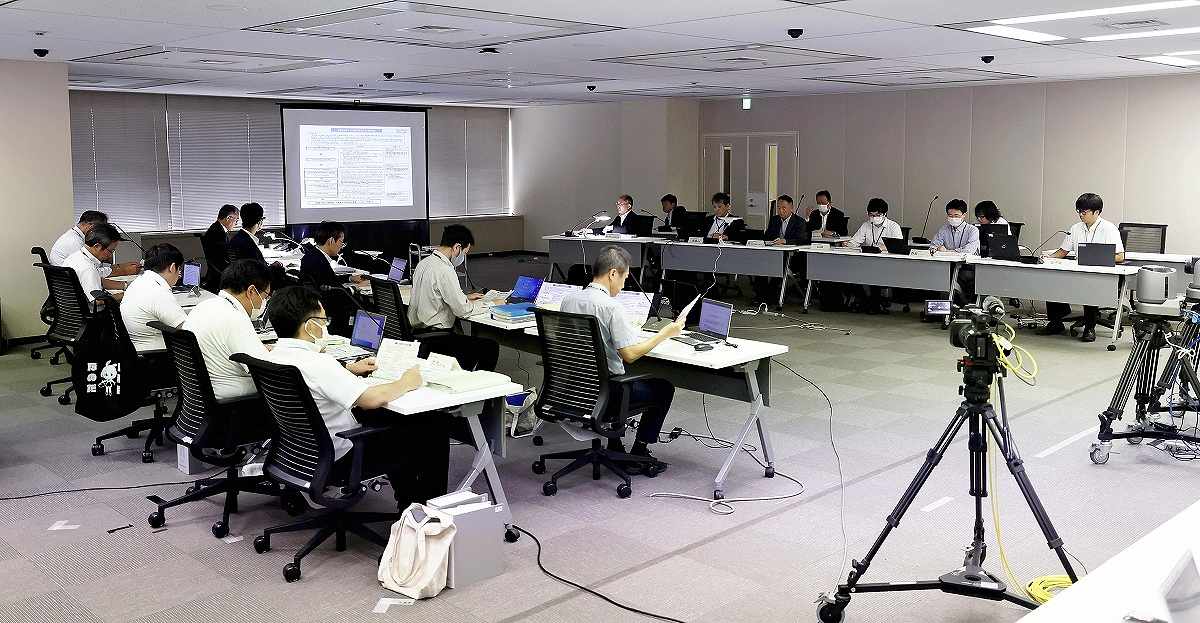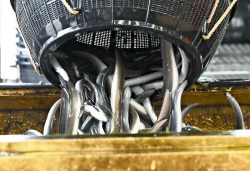Rejection of Tsuruga Nuclear Plant Reactivation Could Have Negative Effects on Attempts to Mitigate Power Shortages

A meeting to decide whether to approve the reactivation of the No. 2 reactor of Tsuruga nuclear power plant is held in Minato Ward, Tokyo, on Friday.
1:00 JST, July 28, 2024
Japan’s electricity supply will remain tight going forward, as it is likely that the Nuclear Regulation Authority (NRA) will reject the Japan Atomic Power Company.’s (JAPC) application to reactivate the No. 2 reactor of the Tsuruga Power Station in Tsuruga, Fukui Prefecture.
The lack of progress on reactivating nuclear reactors since the Great East Japan Earthquake has left the supply of electric power severely restricted, especially in eastern Japan.
It is likely that the demand for electricity will rise because of the proliferation of artificial intelligence products. If the rejection of this application affects plans to reactivate other nuclear power plants, fears of an electricity shortage will grow.
‘We discussed it from every angle’
A frustrated JAPC Vice President Hirofumi Kenda told reporters: “We have explained and discussed this from every angle. We will study the results carefully and consider doing further research,” after attending a meeting with the screening team of the NRA.
Though the JAPC aims to find new scientific support for a second application, it is expected to be difficult for the company to change the NRA’s opinion.
Three electric power companies — Kansai Electric Power Co., Chubu Electric Power Co. and Hokuriku Electric Power Co. — which were scheduled to receive electric power from the No. 2 reactor of the Tsuruga nuclear plant, will now be unable to procure a total of 1.16 million kilowatts of supplies which they expected to get.
A senior official of the Economy, Trade and Industry Ministry said, “I take this very seriously because it is a decision by an independent regulation authority.” The official then lamented, “It is possible that this decision will have negative consequences from the perspective of industrial areas and the like.”
High in west, low in east
The balance of supply and demand for electricity is very tight in Japan. Conditions remain precarious even now, especially in the eastern part of the country..
If July temperatures were to hit their highest level in the past 10 years, the electricity reserve rate — the degree to which surplus supply volumes exceed demand volumes — would be only 4.1% in eastern Japan.
This figure is only slightly higher than the 3% necessary to maintain stable electricity supplies.
On July 8, a rapid spike in temperature nearly caused electricity supplies to fall short in areas served by Tokyo Electric Power Company Holdings Inc. (TEPCO).
TEPCO managed to make ends meet by asking companies with their own thermal power plants to increase power outputs and receiving electric power from Chubu Electric Power.
Of 36 nuclear power generation reactors in Japan, including those under construction, just 12 were reactivated after the earthquake and tsunami of March 11, 2011.
All the reactivated reactors are located in western Japan. Thus, power supply capacities have been high in the west and low in the east of the nation since then.
This trend has been reflected in electricity bills, which are about 20% higher in TEPCO’s service areas than those in service areas of Kyushu Electric Power Co., where four nuclear reactors are in operation.
A 20-fold rise
The proliferation of AI products is predicted to lead to the building of more data centers and semiconductor chip manufacturing plants, all of which consume huge volumes of electricity. Thus demand for electric power is also predicted to increase.
According to a prediction by SoftBank Corp., electricity volumes necessary for operating data centers in Japan will be more than 20 times greater in 2040 than they were in 2020. This increase is equivalent to the output from 30 nuclear reactors.
An estimate by the Organization for Cross-regional Coordination of Transmission Operators, Japan, showed that electricity demand will continue to rise 0.4% on average annually in the coming 10 years, even if measures to lower power consumption and other energy savings progress.
A similar concern was voiced at a Tuesday meeting of an expert panel intended to formulate the government’s next basic energy plan. Nippon Steel Corp. Chairman Eiji Hashimoto said: “Demand will increase in a short period. It will become necessary to reactivate existing reactors and expand them or build new ones.”
The current basic energy plan sets a goal of having nuclear power plants provide 20% to 22% of electric power by fiscal 2030, but as of fiscal 2022, the actual figure sat at just 5.5%.
The government aims to reach “carbon neutrality” — a net zero volume of greenhouse gas emissions — by 2050. To do this, they plan to increase the amount of power supplied by solar and other renewable energy sources.
However, renewable energy sources are easily affected by changes in weather conditions, and power output from them is not stable.
Without reactivating more nuclear power reactors, achieving the government’s energy goals will be difficult.
"Science & Nature" POPULAR ARTICLE
-

Genome Study Reveals Milestone in History of Cat Domestication
-

Big Leap in Quest to Get to Bottom of Climate Ice Mystery
-

Security Camera Footage Vulnerable to Outside Access; Investigation Finds 3,000 Pieces Exposed Online
-

Paws on Parade: Nairobi’s Dogs Dazzle at ‘Pawchella’
-

Japanese Eels Escape New Regulation in Vote at CITES Meeting, Avoiding Higher Prices for Dealers and Diners
JN ACCESS RANKING
-

Keidanren Chairman Yoshinobu Tsutsui Visits Kashiwazaki-Kariwa Nuclear Power Plant; Inspects New Emergency Safety System
-

Imports of Rare Earths from China Facing Delays, May Be Caused by Deterioration of Japan-China Relations
-

University of Tokyo Professor Discusses Japanese Economic Security in Interview Ahead of Forum
-

Japan Pulls out of Vietnam Nuclear Project, Complicating Hanoi’s Power Plans
-

Govt Aims to Expand NISA Program Lineup, Abolish Age Restriction






















